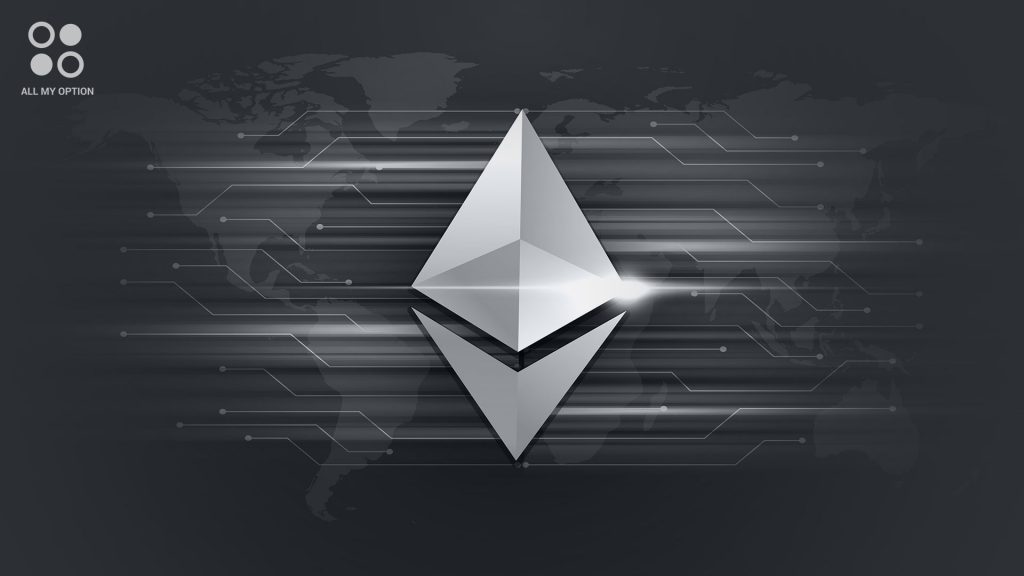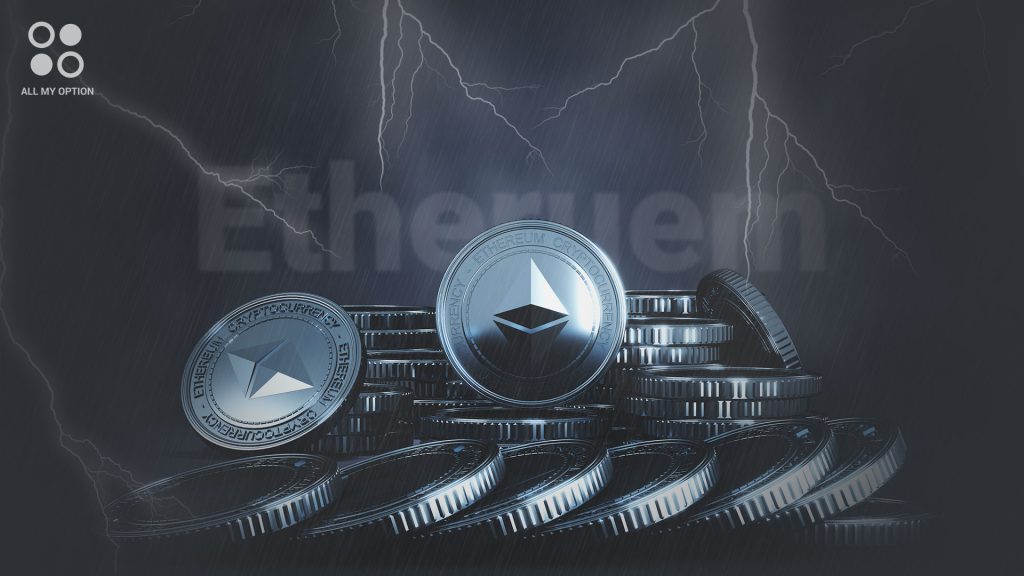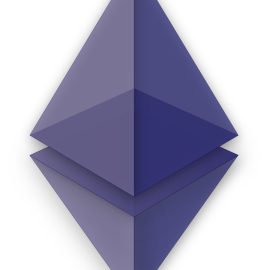- sample pros
- sample pros
- sample pros
- sample pros
- sample pros
- sample pros
What Is Ethereum (ETH)?
Ethereum is basically a global, decentralised, blockchain-based software platform. Its own cryptocurrency, ether (ETH), is by far its most well-known product.
Anyone may use Ethereum to build any kind of secure digital system. For example, a token for getting paid to undertake blockchain-related labour exists. And if it’s approved, users may also use it to buy real-world products and services. Ethereum was developed to be extensible, flexible, safe, and decentralised. Developers and businesses were looking to build blockchain-based products that would revolutionise a wide range of industries. And the ways we live our lives, Ethereum is the blockchain of choice.
Smart contracts, a key component of decentralised apps, are supported out of the box. Smart contracts are used with blockchain technology in many DeFi and other applications.

How Does Bitcoin Work?
Several diverse applications powered by Ethereum may perform a wide variety of tasks:
Currency
For example, if you have a cryptocurrency wallet, you can use it to transfer and receive Ether. Or pay for goods and services. It accepts that cryptocurrency. You may keep your coins safer from hackers by keeping them in a digital wallet. It is an option offered by several exchanges like Coinbase.
Smart contracts
Smart contracts run like apps when an agreement’s parameters are met but don’t need authorisation.
Decentralised apps, or dApps
Games, investments, money transfers, portfolio tracking, social media, and more are some of the many uses for Ethereum-powered digital apps.
Non-fungible tokens
Ethereum, the blockchain technology, can fuel these tokens. They enable artists and others to use smart contracts to sell their work directly to clients.
Decentralised finance
One potential benefit of Ethereum is that it could help certain people circumvent centralised government oversight of financial transactions.
And consider that Ethereum is a token that empowers apps, not a coin that allows users to transmit money.
Who Are the Founders of Bitcoin?
Vitalik Buterin
In November 2013, a 19-year-old Russian-Canadian computer science nerd named Vitalik Buterin came up with the idea for Ethereum. He was also the writer for Bitcoin Magazine.
After spending three years researching the nascent crypto sector, Buterin wrote a whitepaper proposing a platform. It enables any decentralised, censorship-resistant application imaginable as a reaction to Bitcoin’s constraints.
Russo claimed that Buterin was hesitant about taking the helm. But history has shown that he was right to have faith in Buterin.
As an idea, Ethereum was revolutionary, and his dedication to the project has never been in doubt.
In recent years, he’s tried to keep out of the spotlight to develop Ethereum 2.0. It is the next version of the blockchain platform that would allow it to scale. He continues to work directly on the platform.
Mihai Alisie
Before knowing about Bitcoin, Mihai Alisie supported himself in his native Romania by coaching and playing poker.
After connecting with Buterin in 2011, he helped establish Bitcoin Magazine. And later, he collaborated on developing Egora, a decentralised alternative to eBay for Bitcoin.
Incorporating the original start-up, obtaining a bank account for the developing crypto company. Lastly, Alisie helped develop Ethereum’s Swiss base by working with lawyers and officials on the pre-sale legal form.
Before shifting his focus to Akasha, a social foundation for Ethereum, he served as vice president of the Ethereum foundation.
Alisie isn’t as engaged with Ethereum as before, although his social network experiment may launch with Ethereum 2.0.
Anthony Di Iorio
Anthony Di Iorio is also a native of Toronto, Canada, just like Buterin. Before he became interested in Bitcoin, he had access to money from his family. He had experimented in marketing and commercial endeavours, investing one million pounds in a geothermal drill business.
He was one of the first persons Ethereum’s creator requested to be a co-founder. And he met Buterin during a Bitcoin meetup that he had hosted in November 2012.
Russo said Di Iorio wasn’t as enthusiastic about Ethereum’s non-profit direction as other co-founders. After this point was settled, he mostly stepped back.
Amir Chetrit
During a Bitcoin business meeting in Amsterdam in September 2013, Buterin met Amir Chetrit, a United States and Israel national.
In the years before 2008, the latter had given up on his attempt to earn a degree in computer science. And it had dabbled in real estate. At that point, he began questioning the conventional financial system, like practically all other founders.
He became interested in Bitcoin. And when he met Buterin, he worked with the Israeli company Colored Coins to handle real-world assets as Bitcoin tokens.
Before developing Ethereum, Buterin worked on the project. And, In December 2013, he requested Chetrit to join him.
In June 2014, Ethereum developers and other cofounders criticised Chetrit for his lack of contribution to Ethereum. As a result, he agreed to resign aside while remaining a cofounder.
Charles Hoskinson
Originally, Charles Hoskinson was interested in mathematics, but after getting disillusioned with the field, he began focusing more on Bitcoin.
Hoskinson, a native Hawaiian who grew up in Colorado, was introduced to Ethereum and Buterin by Anthony Di Iorio. Hoskinson had already successfully secured funds for an early version of a decentralised exchange.
As one of the initial five co-founders of Ethereum, he was appointed CEO in December 2013. And he played a crucial role in establishing the Swiss Foundation’s legal framework.
Hoskinson later supported Ethereum as a for-profit organisation, which alienated many other members. And ultimately caused him to leave.
After the contentious Ethereum hard split in 2016, Hoskinson backed the fork’s offspring, Ethereum Classic. At the same time, he released Cardano, which, with a significant new blockchain upgrade earlier this month, is now the sixth most important cryptocurrency by market valuation.

Gavin Wood
Bitcoin evangelists Amir Taaki and Johnny Bitcoin were the ones to expose British computer programmer Gavin Wood to Bitcoin. And, by extension, Vitalik’s whitepaper. He reached out to Buterin and proposed developing an Ethereum client for C++.
In January 2014, he met the first five Ethereum co-founders in Miami during a Bitcoin conference. Being the first to successfully launch an Ethereum testnet, he sought a seat at the table of power. Eventually, after some initial resistance, the others gave in.
Solidity, Ethereum’s native programming language, was proposed by Vitalik. He published the Ethereum Yellow Paper, a technical definition of the white paper, in April 2014. Wood worked on Ethereum programming through Parity, a company he co-founded with Jutta Steiner. Now he’s focused on the Web3 Foundation and Polkadot, an Ethereum competitor.
Jeffrey Wilcke
When Jeffrey Wilcke realised about Ethereum, he was in the Netherlands working on Mastercoin, the first Initial Coin Offering.
His enthusiasm led him to stealthily create a Go language implementation at Google. Beginning in 2014, he joined Gavin Wood on the list of founders.
Wilcke began developing “Geth” around the same time Wood began his C++ implementation. Each had contributed independently, though, because they were unaware of the other’s existence.
It was beneficial to have two implementations, as there would always be a fallback option. By year’s end, he had already dropped hints about the dissatisfaction that had led to his departure.
Grid Games, which he co-founded with his brother Joey, was recently funded by selling some of the ether. Developers have officially been put on the company’s radar at Grid Games.
Joseph Lubin
Joseph Lubin, a 1987 Princeton graduate in electrical engineering and computer science, is the co-founder with the most years of expertise.
Lubin worked in software engineering, music production, business, and finance before becoming attracted to crypto through the Bitcoin Alliance of Ca. After meeting with Buterin, he was invited to become one of the company’s co-founders. The financial backing of Di Iorio and Lubin was crucial to the survival of Ethereum in its early stages.
Lubin intended to create a for-profit business to build Ethereum’s application layer when the charity decision was made. Consensys has attracted huge financial institutions and IT giants as Ethereum’s partners.
How to Buy Ethereum?
It’s crucial to consider many things, including location and protocol, before making a cryptocurrency purchase.
To purchase Ethereum, simply use many exchanges by searching the net. But here we let you know to use Coinbase’s controlled exchange.
Do the steps below as instructed:
1-Open a Coinbase account
a: Create an account with Coinbase by signing up online or in the mobile app.
b: If you want to do business, you will need to provide an ID and possibly proof of address.
c: Depending on where you are from, verifying your ID could take more than a few minutes.
2- Add payment option
a: Choose a payment method by tapping the payment box.
b: You can pay with a bank account, debit card, or wire transfer.
3- Trade debut
a: Choose the “Buy & Sell” tab on Coinbase.com.
b: On the Home tab of the Coinbase mobile app, tap the (+) Buy button.
4- Select Ethereum from the assets list
a: To search and pick Ethereum on Coinbase.com, click the Buy panel.
b: In the search field of the Coinbase mobile app, enter “Ethereum” to look for Ethereum.
c: Tap Ethereum to access the buy screen when it appears in the search results.
5-Enter the number you wish to purchase
a: Enter the amount you wish to spend in your local currency using the numeric keypad.
b: The application will instantly convert that to Ethereum.
c: Tap the arrow buttons to the right of your purchasing amount to convert it to Ethereum.
6- Complete the Ethereum purchase
a: Ready? Tap “Preview buy.” You’ll see purchasing details.
b: Ensure that everything is OK, and then confirm your purchase by selecting “Buy now.”
7- Done
After the order has been processed, you will be directed to a confirmation screen. And you have successfully purchased Ethereum.
How Much is Ethereum in Circulation?
The supply of many digital currencies is finite. E.g. Satoshi Nakamoto created the Bitcoin network and set a cap on the total number of coins that can ever be mined.
The deflationary characteristics of virtual currency are to blame. As a result, bitcoin’s value has increased exponentially over time.
Nineteen million out of a total of 21 million Bitcoins are already mined. The majority of Bitcoins (around 90%) have already been mined.
However, Ethereum’s creator, Vitalik Buterin, has stated his preference to build a network with a limitless supply of currency. The genesis block was the first block mined in the Ethereum blockchain, containing the equivalent of about 72 million ETH, back in 2015.
These coins produced by mining were used in public offerings. And the developing fund also benefited from their donation. The remaining Ethereum in circulation was used to pay the miners who processed the transactions.
On the blockchain, they were added as a block reward. However, there is already more than 120 million ETH in circulation. Ethereum’s mining time is 13-15 seconds, while bitcoin’s is 10 minutes; hence Ethereum has higher growth potential.
Historical Data for Ethereum–Ethereum price per day from Aug 2015 – Dec 05, 2022
Ethereum’s price history implies it was worth less in 2022 than in late 2021, but not the lowest ever.
The price of ether (ETH) increased in 2021 for similar reasons as Bitcoin (BTC):
A piece of digital art sold on Ethereum for over 38,000 ETH. It (equivalent to over $69,300,000 at the time) made headlines. Unlike Bitcoin, propelled by Coinbase’s IPO, Ethereum’s surge came from technological breakthroughs that excited traders. Prior to the Ethereum Merge in 2022 and cheaper ETH gas prices (transaction fees), the “Berlin update” was released in April 2021 on the Ethereum network. However, the cryptocurrency’s fortunes shifted drastically after the FTX exchange fall in late 2022.
Ethereum’s value dropped from $44,000 at the end of 2021 to $1282.42 on December 5, 2022.

Ethereum Latest News
1- ETH’s Price Has to Overcome Break Level to Prevent Further Losses
The price of Ethereum (ETH) has begun a downward reversal from $1,300. Before falling below $1,275, ETH went as high as $1,304. Afterwards, the altcoin’s price dipped below $1,255 and the 100 hourly SMA.
Above $1,240, though, dealers became more active. After forming a low near $1,241, the price is currently recovering lost ground. The current decrease from $1,304 to $1,241 also broke above its 23.6% Fib retracement level.
Near $1,275, and the 100 hourly SMA is upside resistance. This resistance is at the 50% Fib retracement of the price decrease from $1,304 to $1,241.
If Ethereum can sustain a close of over $1,275, it may unleash a new wave of purchasing pressure. ETH’s price will rise to $1,300, where it could gain bullish momentum for a move to $1,350.
If prices continue to increase, the $1,400 level may be reached. This bullish thesis will be discredited if ETH’s price doesn’t rise beyond $1,275. The $1,240 level is an early area of support on the downside. At the time of writing, ETH is trading at $1,257.69 after a 0.29% 24-hour decrease.
The data comes from CoinMarketCap, a service that collects data on the cryptocurrency market.
2- ETH supply shifts back to inflationary
Ethereum (ETH) is inflationary again after reversing deflationary gains from November’s FTX collapse. ETH supply reverted to inflationary on Dec. 2, increasing by 0.00029% (349 ETH) after becoming the most deflationary it’s ever been.
ETH’s inflationary percentage is +0.008%, the same as in early November. Each day, 2,300 ETH are added to the total ETH supply, causing inflation. ETH burn rate has continued to drop, further dimming chances for deflation.
Ethereum competitors
1- Polkadot
Polkadot refers to a blockchain network and a digital currency. It’s purpose-built to remove the need for a trusted third party when blockchains need to communicate and transact with one another.
As a result, the Polkadot Network can be used to create decendecentralised. And facilitate cross-chain transfers of data or assets between blockchains.
2- Tezos
A platform for creating smart contracts, Tezos is an open-source blockchain that can execute peer-to-peer transactions.
3- Cardano
Cardano is a contender for a more environmentally sustainable alternative to Ethereum. Its native currency, ADA, had about an $18.25 billion market cap at the time of this writing.
4- Solana
Solana is a crypto-computing platform that prioritises speed over decentralisation. Decentralised apps (dapps) like Degenerate Apes and Serum can run on Ethereum, Solana (or DEX).
Sources:

